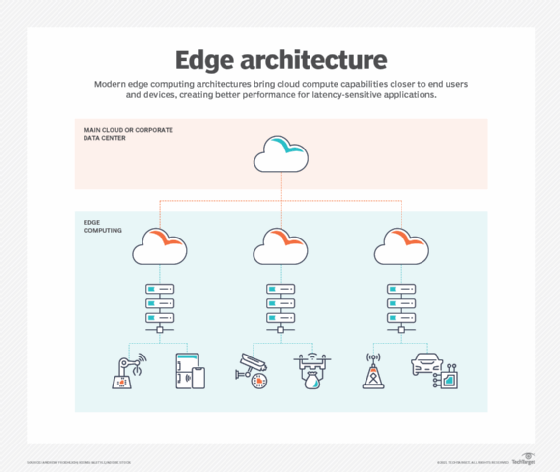
Alex - stock.adobe.com
5 steps to achieve network infrastructure modernization
All networks may be different, but companies have similar goals when they look to upgrade their network infrastructures. Assessing current designs is just the first step.
Not surprisingly, the term infrastructure modernization means different things to different people. After all, no two enterprise network infrastructures are designed and built with the same business goals in mind. However, newly architected infrastructures have far more in common with each other than networks did long ago. Thus, the process of infrastructure modernization will likely be similar in many regards.
Let's examine five steps organizations should take when they want to update their existing IT infrastructures with the latest technologies, platforms and tools.
Step 1. Understand what modern infrastructure looks like.
Our first step is to consider how IT infrastructures have evolved over the past decade or so. Historically, a corporate infrastructure largely consisted of a LAN, WAN and private data center that was wrapped inside a secure network parameter.
Today's infrastructure parameter, however, extends well beyond any physical corporate boundary. IT decision-makers have found a better and more efficient infrastructure is to migrate applications, data and other IT services to one or more public clouds using a hybrid cloud or multi-cloud model. Additionally, modern edge computing architectures bring cloud compute capabilities closer to end users or autonomous devices -- creating better application performance for latency-sensitive apps.
Ultimately, modern infrastructures broaden the corporate network footprint to provide the necessary levels of performance, scalability and agility that modern applications demand.

Step 2. Evaluate your existing infrastructure.
To move your organization into a modern infrastructure architecture capable of meeting current and future demands, thoroughly evaluate your existing LAN, WAN, internet and cloud components. Typically, this analysis should be performed at the application level first and then trickle down to the existing network that those applications and data traverse.
In most cases, a detailed assessment of business-critical applications, data and network flows will help determine where performance and cost efficiencies can be gained. It's here where some applications or processes should be flagged to be reworked or replaced with modern alternatives that operate more efficiently in highly distributed hybrid, multi-cloud or edge computing designs.
Step 3. Identify gaps in your current infrastructure.
The results of the infrastructure evaluation should highlight areas where new hardware, software, platforms and managed services can better bolster performance and fuel gains in cost efficiency.
For example, the evaluation may lead to the realization that moving certain business-critical applications from the corporate LAN to a public cloud provider is more suitable for employees who are increasingly working from home. This shift, however, could result in a security gap, which could be filled by extending existing IT security policies both into the cloud and out to the remote employee using modern Secure Access Service Edge tools. Doing so would better protect sensitive data and intellectual property from being lost or stolen.
Step 4. Formulate your version of infrastructure modernization.
As mentioned earlier, no two infrastructures are built the same because every business has different goals. Thus, when performing an infrastructure redesign, architects should understand how business leaders expect to operate in the future. The COVID-19 pandemic is a prime example.
If decision-makers plan to extend work-from-home policies indefinitely, the corporate infrastructure should accommodate employees who will be geographically dispersed for the foreseeable future. In most cases, private data centers could be phased out altogether in favor of infrastructure architectures based on public cloud and metro edge deployments. On the other hand, if employees are expected back into the office, a hybrid cloud infrastructure model remains a viable option.
Step 5. Calculate the cost of infrastructure modernization.
Finally, based on your company's vision of what modern infrastructure should look like, it's time to research infrastructure hardware, software and managed service options that can be used to realize your organization's goals.
If your business is like most, the objective should be to eliminate as much Capex as possible and replace it with service-based, operational fees. This payment model offers a variety of benefits: It requires less upfront money to build, creates a more predictable cost structure and provides an avenue for scaling both upward and downward.
When calculating the cost of infrastructure modernization, it's important to not just include expenses related to purchasing and implementing new technologies and services. Ongoing maintenance plans and training will also factor into the equation.





